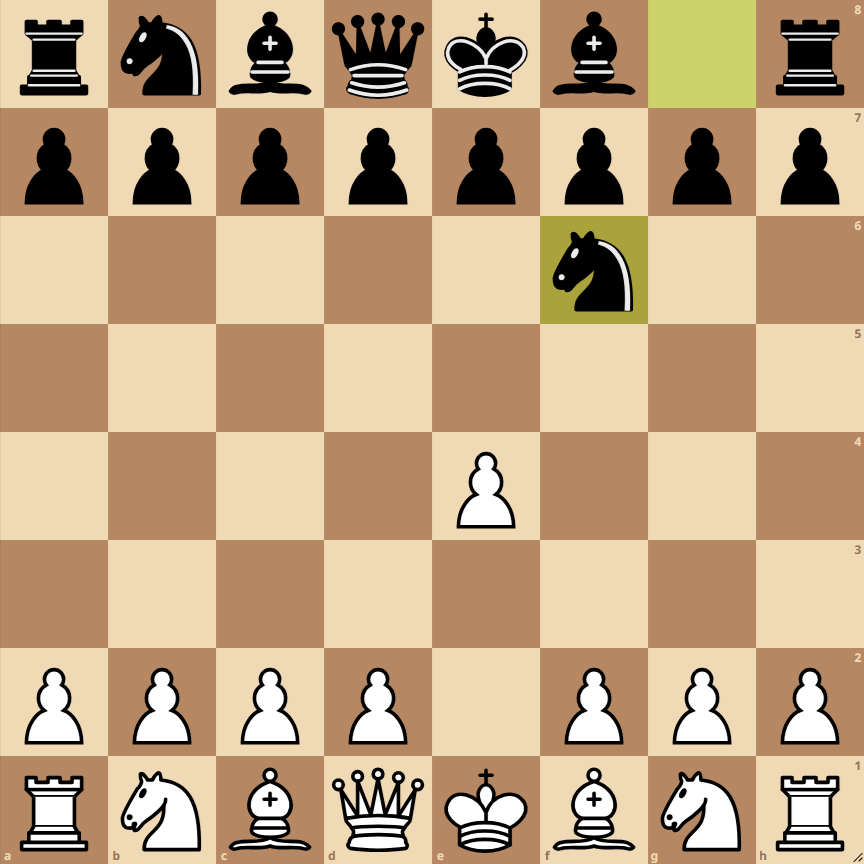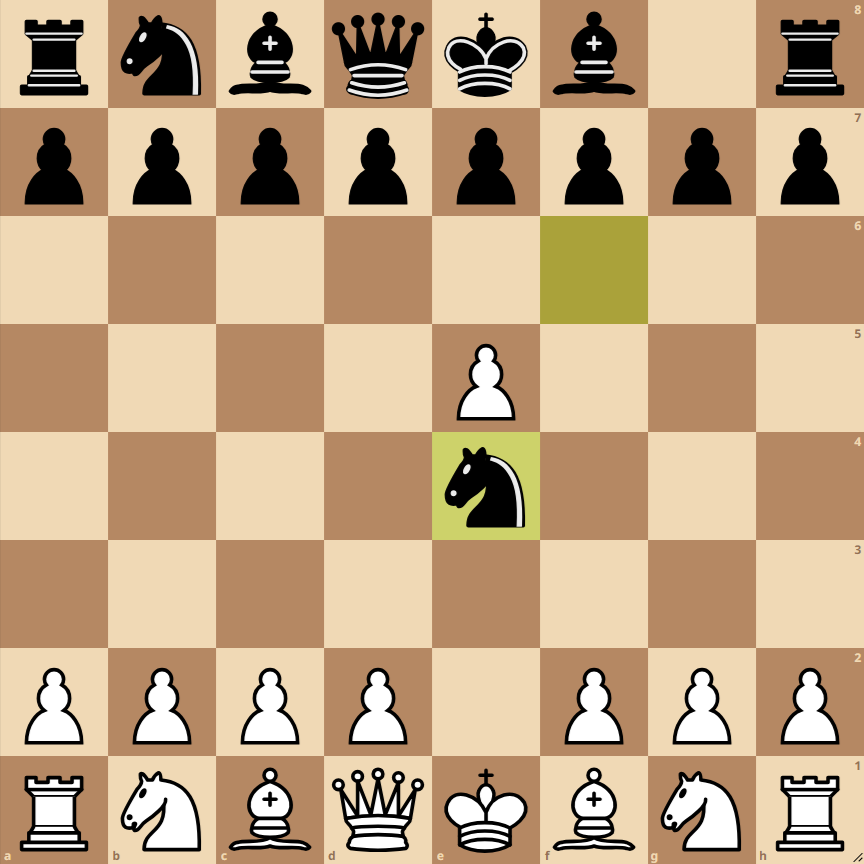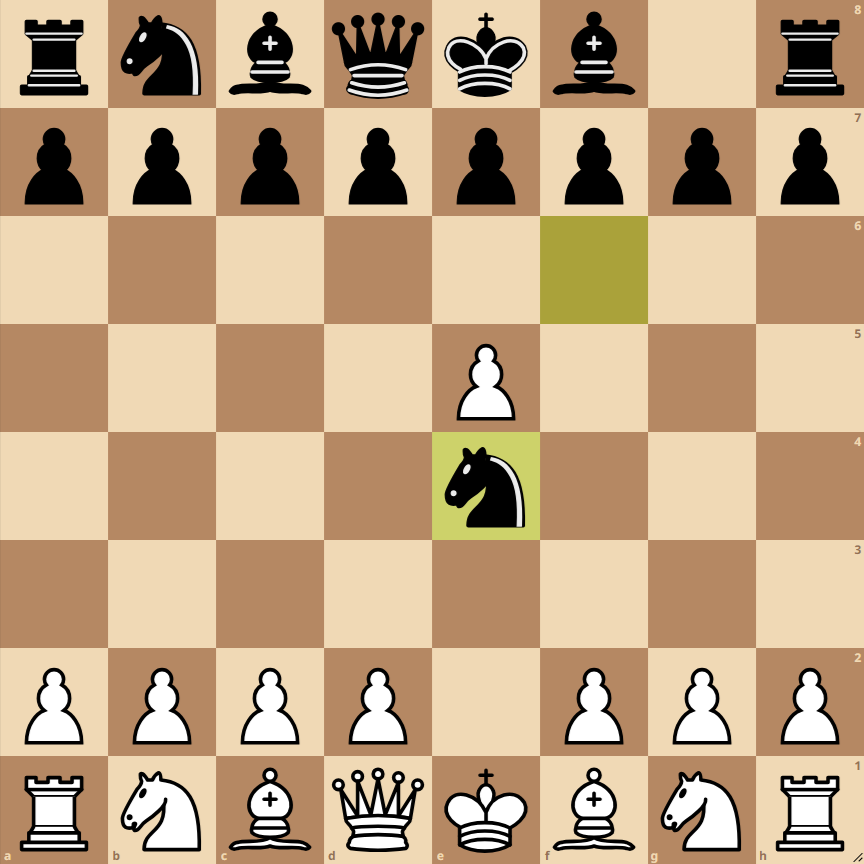How to Play the Alekhine Defense Mokele Mbembe Variation


- 1. e4: This is the most popular opening move, controlling the center and preparing for the development of minor pieces.
- Nf6: Black responds by attacking the e4 pawn immediately. This marks the beginning of the Alekhine Defense, aiming to provoke White to advance their central pawns.
- e5: White advances their pawn, attacking the knight on f6 and gaining central space.
- Nxe4: A less common move in the Alekhine Defense. The knight moves to e4, putting pressure on White’s central pawn and challenging White’s central structure.
Variations of the Alekhine Defense Mokele Mbembe Variation
Main Variation
In the main variation, Black continues to develop their pieces while handling the tension in the center. The struggle revolves around central control and the balance between development and pawn structure.
Advance Variation
If White decides to advance their pawn to e6, they force the black knight to relocate, usually to d5. This variation aims to limit Black’s options and restrict the knight’s development.
Exchange Variation
One possible continuation for White is to exchange the pawn on e5 for the knight on e4. This leads to a more open pawn structure and can result in a more tactical game.
Opening: Alekhine Defense – Mokele Mbembe Variation
Initial Moves: 1. e4 Nf6 2. e5 Ne4
Position Analysis and Strategy
For White:
Centralization and Space: By playing 1.e4 and then 2.e5, White gains central space. This central control allows White more flexibility in developing their pieces and preparing for future advances in the center and on the flanks.
Next Moves: Moves like 3.d4, 3.d3, or 3.c4 are natural and strong. 3.d4 expands central control and opens lines for the development of the bishop and queen. 3.d3 is more conservative, seeking to secure the e4 square before expanding. 3.c4 prepares expansion on the queen’s flank and supports the d4 advance.
Development and King Safety: It is important for White to quickly develop their pieces (bishop, knight, and short castling) to capitalize on their spatial advantage and prepare for potential counterattacks.
For Black:
Counterplay and Piece Activity: Black’s initial move (1…Nf6) aims to attack the e4 pawn and provoke White to play 2.e5, slightly unbalancing their pawn structure. Move 2…Ne4 continues this strategy of provocation and imbalance.
Reorganization and Flexibility: After moving the knight to e4, Black must be prepared to reorganize their pieces efficiently. Moves like …d5 can be useful to challenge the center and open lines for other pieces.
Preparation for the Middlegame: Black should be vigilant about threats of White’s pawn advances in the center and seek opportunities for counterplay. Precise play is essential to avoid positional or material disadvantage.
Conclusion
The Alekhine Defense, especially in the Mokele Mbembe Variation, leads to dynamic positions rich in tactical and strategic possibilities for both sides. White aims to leverage their spatial and central advantage, while Black seeks to unbalance and counterattack. Proper management of space, time, and piece development will be crucial in the upcoming phases of the game.

